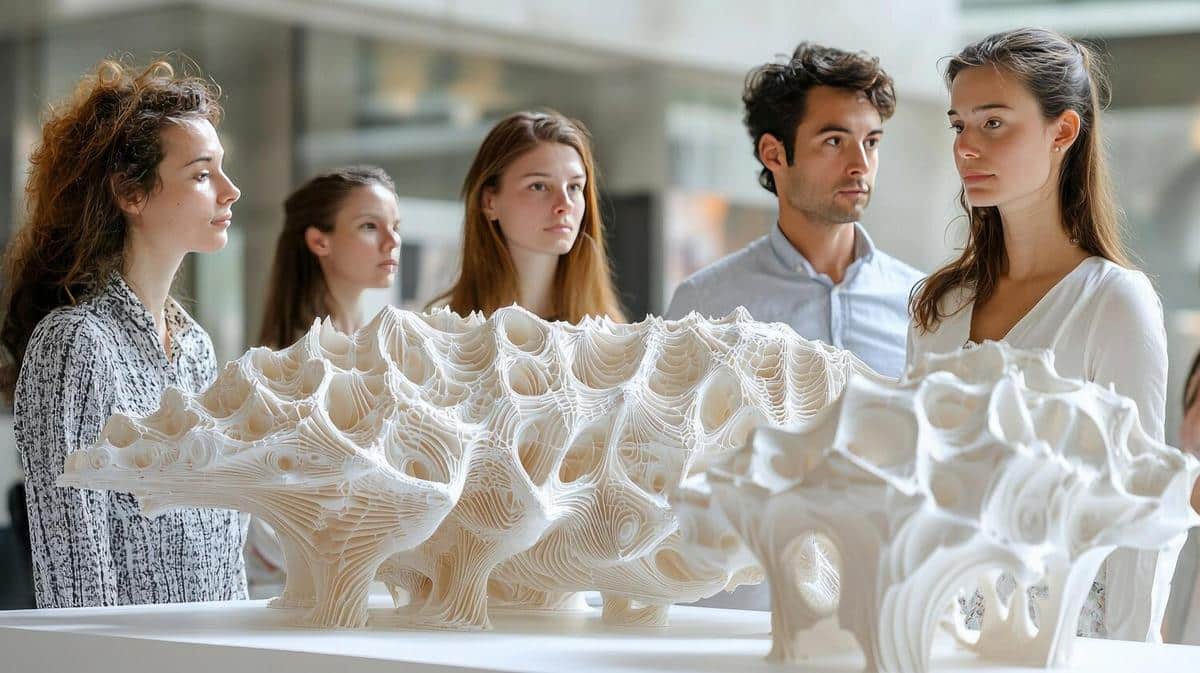
3D Printing in Art: Transforming Creative Possibilities
Art has always been a canvas for innovation, and in recent years, 3D printing has emerged as a transformative force in the creative world. By fusing technology with artistry, 3D printing is expanding the boundaries of what is possible in the realm of digital art.
Exploring the Intersection of Art and Technology
3D printing, also known as additive manufacturing, allows artists to create intricate designs by layering materials to form a tangible object. This technology has opened new avenues for creativity and expression, offering artists the ability to produce works that were previously unimaginable.
Expert Insights
According to a report by the International Data Corporation, the global market for 3D printing is expected to reach $35.4 billion by 2023. This growth is largely driven by the increasing adoption in various creative fields, including art. Renowned artist and technologist, Joris Laarman, emphasizes that ‘3D printing liberates artists from the constraints of traditional methods, enabling a new level of artistic freedom.’
Transformative Artistry
Artists are using 3D printing to explore new dimensions in sculpture, installations, and even fashion. For instance, a notable example is the 3D-printed sculptures by contemporary artist Nick Ervinck, whose work blurs the lines between digital and physical spaces, creating intricate pieces that would be impossible to craft by hand.
Getting Started with 3D Printing in Art
- Start with small projects to understand the basics of 3D modeling and printing.
- Invest in a good quality 3D printer and learn the software tools required for design.
- Experiment with different materials and techniques to find your unique style.
Consider collaborating with other artists or technologists to expand your creative horizons and learn new skills.
Comparison Table: Traditional vs. 3D Printed Art
| Aspect | Traditional Art | 3D Printed Art |
|---|---|---|
| Materials | Paint, clay, metal | Plastics, resins, metals |
| Timeframe | Varies, often longer | Shorter with rapid prototyping |
| Complexity | Limited by handcrafting abilities | High complexity achievable |
| Customization | Limited | Highly customizable |
| Reproducibility | Unique pieces | Easily reproducible |
| Cost | Varies, can be high | Initial investment with lower long-term costs |
| Environmental Impact | Depends on materials | Potentially lower with sustainable materials |
| Skill Set | Traditional artistic skills | Software and technical skills |
Frequently Asked Questions
How can 3D printing benefit artists?
3D printing offers artists the ability to create complex and detailed artworks that are difficult to achieve with traditional methods. It also allows for rapid prototyping and experimentation.
What materials can be used in 3D printing for art?
Artists can use a wide range of materials including plastics, resins, metals, and even biodegradable options, depending on the desired outcome and the printer capabilities.
Is 3D printing environmentally friendly?
While 3D printing can use a lot of energy, many artists are exploring sustainable materials and recycling processes to make it more environmentally friendly.
Conclusion: Unleashing Artistic Potential
3D printing is not just a tool; it’s a revolutionary platform that is reshaping the world of art. By embracing this technology, artists can push the limits of creativity and craftsmanship. Whether you’re an established artist or a novice, the possibilities with 3D printing are as limitless as your imagination. As you venture into this exciting domain, remember that each layer you print is a step toward a new artistic frontier.